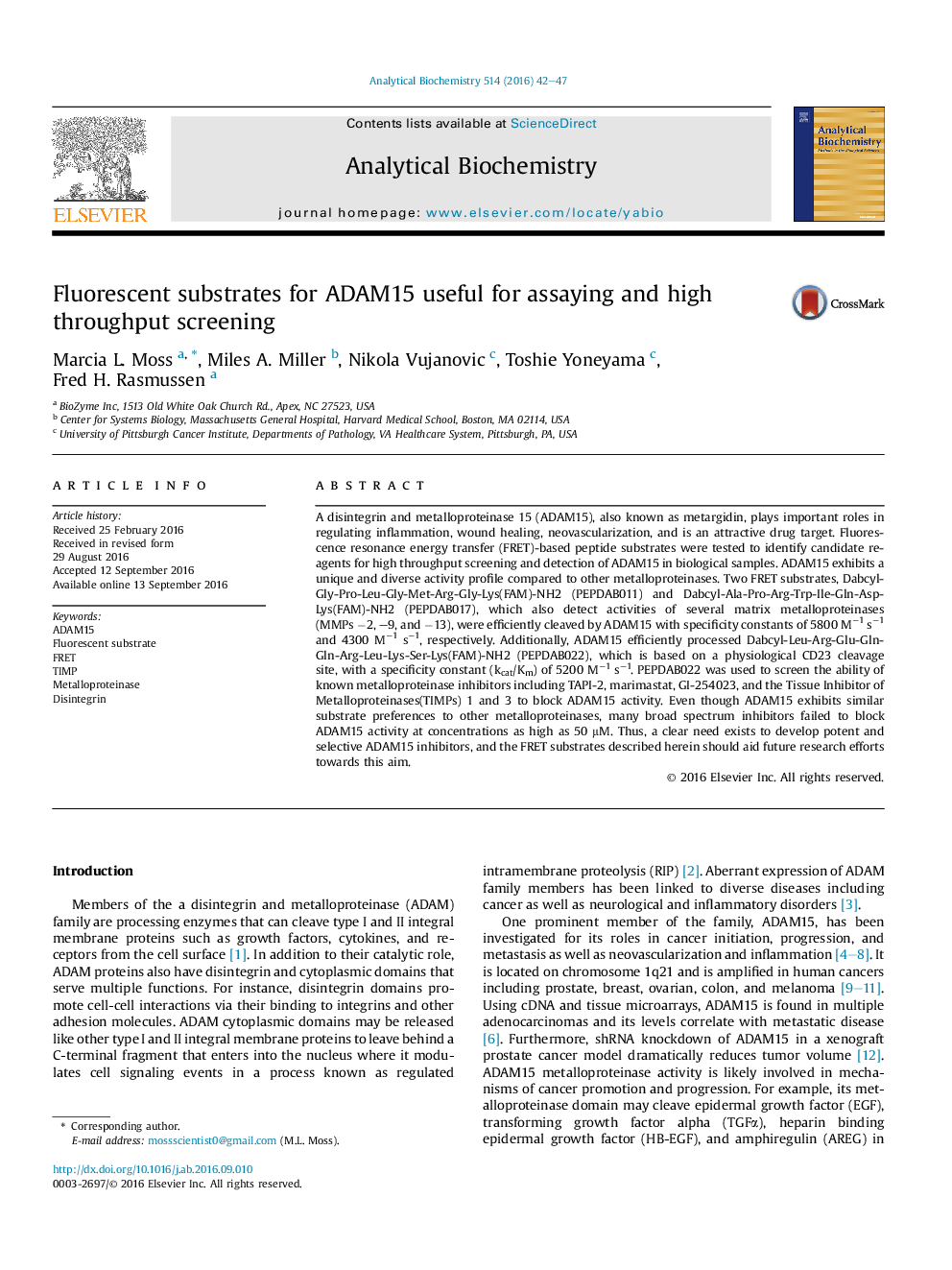| Article ID | Journal | Published Year | Pages | File Type |
|---|---|---|---|---|
| 5131765 | Analytical Biochemistry | 2016 | 6 Pages |
A disintegrin and metalloproteinase 15 (ADAM15), also known as metargidin, plays important roles in regulating inflammation, wound healing, neovascularization, and is an attractive drug target. Fluorescence resonance energy transfer (FRET)-based peptide substrates were tested to identify candidate reagents for high throughput screening and detection of ADAM15 in biological samples. ADAM15 exhibits a unique and diverse activity profile compared to other metalloproteinases. Two FRET substrates, Dabcyl-Gly-Pro-Leu-Gly-Met-Arg-Gly-Lys(FAM)-NH2 (PEPDAB011) and Dabcyl-Ala-Pro-Arg-Trp-Ile-Gln-Asp-Lys(FAM)-NH2 (PEPDAB017), which also detect activities of several matrix metalloproteinases (MMPs â2, -9, and â13), were efficiently cleaved by ADAM15 with specificity constants of 5800 Mâ1 sâ1 and 4300 Mâ1 sâ1, respectively. Additionally, ADAM15 efficiently processed Dabcyl-Leu-Arg-Glu-Gln-Gln-Arg-Leu-Lys-Ser-Lys(FAM)-NH2 (PEPDAB022), which is based on a physiological CD23 cleavage site, with a specificity constant (kcat/Km) of 5200 Mâ1 sâ1. PEPDAB022 was used to screen the ability of known metalloproteinase inhibitors including TAPI-2, marimastat, GI-254023, and the Tissue Inhibitor of Metalloproteinases(TIMPs) 1 and 3 to block ADAM15 activity. Even though ADAM15 exhibits similar substrate preferences to other metalloproteinases, many broad spectrum inhibitors failed to block ADAM15 activity at concentrations as high as 50 μM. Thus, a clear need exists to develop potent and selective ADAM15 inhibitors, and the FRET substrates described herein should aid future research efforts towards this aim.
